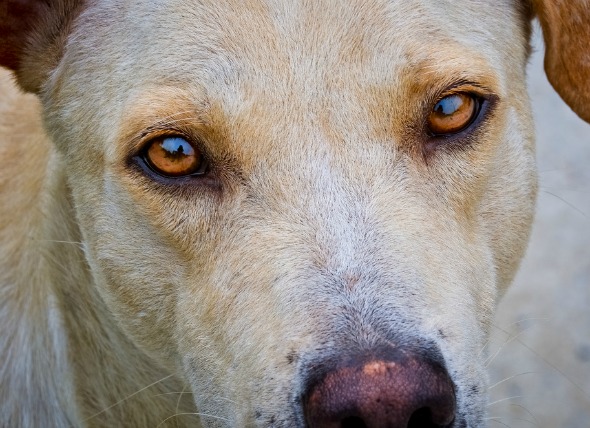

Acral lick dermatitis is a firm, raised, ulcerative, or thickened plaque usually located on the back side of the wrist, on the ankle, or between the toes. This disease primarily affects dogs, and most commonly large breeds, especially Doberman Pinschers, Labrador Retrievers, Great Danes, Irish and English Setters, Golden Retrievers, Akitas, Dalmatians, Shar-peis, and Weimaraners. The age at which it occurs in animals varies with the cause. Some experts suggest that it is more common in males; others indicate there is no preference.
The following are some symptoms that may be observed if your dog is suffering from acral lick dermatitis:
A veterinarian will first need to do a behavioral history on your dog. The following are a list of other possible examinations generally used to diagnose acral lick dermatitis:
It is important that the veterinarian rule out any underlying diseases prior to diagnosing neurologically caused (psychogenic) skin disorders.
Acral lick disease is difficult to treat, especially if no underlying cause is identified. Your dog must get plenty of attention and exercise; counterconditioning may also be helpful. Physical restraints such as Elizabethan collars and bandaging can be used in the short term. Diet, however, should remain the same, unless an allergy is suspected. And surgery is only used if all other therapies have been exhausted.
The following medication types may be used to treat this medical condition:
1. Antibiotics
2. Systemic
3. Topical
If an underlying disease is found to be the cause, treating it should help prevent the dermatitis from recurring in your dog. If it is not found, neurological causes -- obsessive compulsive or self-mutilation disorders -- may be to blame. In these cases, prognosis is guarded.
It is important that you monitor your dog's licking or chewing.
 Diseases of the Orbit of the Eye in Dogs
Exophthalmos, Enophthalmos, and Strabismus in Dogs
Diseases of the Orbit of the Eye in Dogs
Exophthalmos, Enophthalmos, and Strabismus in Dogs
 Transitional Cell Carcinoma of the Urinary Tract in Dogs
Transitional Cell Carcinoma of the Renal, Bladder and Ur
Transitional Cell Carcinoma of the Urinary Tract in Dogs
Transitional Cell Carcinoma of the Renal, Bladder and Ur
 Parasite Infection (Babesiosis) in Dogs
Babesiosis in Dogs
Babesiosis is the diseased sta
Parasite Infection (Babesiosis) in Dogs
Babesiosis in Dogs
Babesiosis is the diseased sta
 Unintentional Eye Movement in Dogs
Nystagmus in Dogs
Nystagmus is a condition
Unintentional Eye Movement in Dogs
Nystagmus in Dogs
Nystagmus is a condition
 Acute (Sudden) Dog Diarrhea
Dog Diarrhea has four general reasons for occurring: osm
Acute (Sudden) Dog Diarrhea
Dog Diarrhea has four general reasons for occurring: osm
Copyright © 2005-2016 Pet Information All Rights Reserved
Contact us: www162date@outlook.com